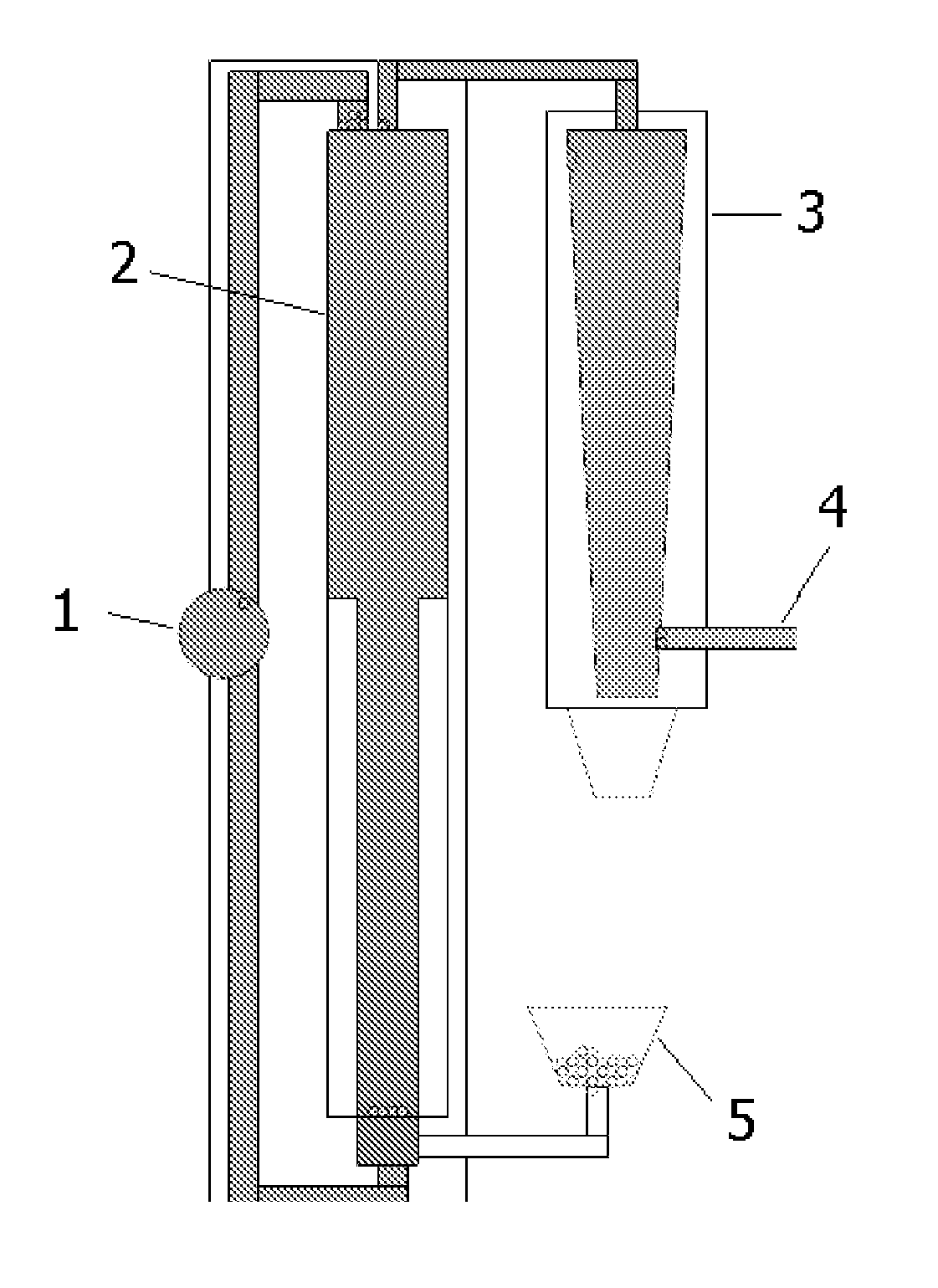Metal recovery process
a metal recovery and metal technology, applied in the field of metal recovery process, can solve the problems of a large volume of ready leaching of iron, further complications in realising the value of material,
- Summary
- Abstract
- Description
- Claims
- Application Information
AI Technical Summary
Benefits of technology
Problems solved by technology
Method used
Image
Examples
example
[0040]Lead smelter slag, containing over 5% wt / wt, was fed with no additional preparation to a fluidised bed reactor at 900° C. The fluidised bed was maintained with compressed air to ensure a homogenous bed and the temperature was maintained by external elements due to the laboratory scale of the test. Pre-formed hydrochloric gas was then fed into the fluidised bed where it reacted instantaneously with the slag. The hydrochloric gas preferentially converts the entrapped zinc, copper and residual lead into metal chlorides that are then volatilised from the bed. Tests show that in excess of 90% of the zinc was extracted and similar values were obtained for both the copper and lead. The volatilised metal chlorides were then condensed to solids and collected for refining into saleable metal products. The test indicated a retention time of 4 hours and an optimum usage of hydrochloric gas equivalent to 125% of the estimated stoichiometric demand of the zinc alone.
PUM
| Property | Measurement | Unit |
|---|---|---|
| temperature | aaaaa | aaaaa |
| temperatures | aaaaa | aaaaa |
| temperatures | aaaaa | aaaaa |
Abstract
Description
Claims
Application Information
 Login to View More
Login to View More - R&D
- Intellectual Property
- Life Sciences
- Materials
- Tech Scout
- Unparalleled Data Quality
- Higher Quality Content
- 60% Fewer Hallucinations
Browse by: Latest US Patents, China's latest patents, Technical Efficacy Thesaurus, Application Domain, Technology Topic, Popular Technical Reports.
© 2025 PatSnap. All rights reserved.Legal|Privacy policy|Modern Slavery Act Transparency Statement|Sitemap|About US| Contact US: help@patsnap.com

